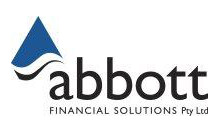Catch up on your super
If you’ve had an irregular or interrupted income in the past, you might’ve missed out on opportunities to contribute to super. If you don’t fully utilise your concessional cap, and you’re eligible, you may be able to make ‘catch up’ on concessional contributions.

What is a ‘catch-up’ concessional contribution?
It used to be a case of ‘use it or lose it’. If you couldn’t contribute the maximum annual concessional (before-tax) contribution amount to your superannuation, the opportunity was lost.
This meant many people, women in particular, had a lower super balance for their retirement. This was typically a result of their working life being interrupted by things like studying, starting a family or taking care of parents. This could also be the outcome from working in casual or part-time jobs.
Can I make concessional contributions?
An annual cap of $27,500 applies to concessional contributions. This is the most you can contribute in one year.
Concessional contributions include:
-
mandatory employer contributions (such as Super Guarantee)
-
salary sacrifice contributions (paid from your salary before it’s taxed), and
-
personal contributions that you claim a personal tax deduction for.
If your concessional contributions in a year are less than the annual cap, the ‘unused’ amount can be carried forward for the next five financial years. After five years, that unused amount will expire.
For example, if you only have total concessional contributions of $10,000 out of the available $27,500 in the 2022/23 financial year, the unused amount of $17,500 can be carried forward for the next five years. If you’re eligible, this could enable you to make a greater concessional contribution in a future year.
If you’re aged between 67 and 75 you’ll need to meet a work test to make concessional contributions – you need to have done at least 40 hours of paid work in any consecutive 30-day period that financial year.
Can I make catch-up contributions?
So you have an unused amount that you have carried forward from an earlier year, and you want to make a ‘top-up’ carry-forward contribution. What now?
You will need to look at your ‘total super balance’ (TSB). Your TSB prior to 30 June must be less than $500,000 for you to be eligible to make the catch-up contribution using your carried forward amount.
Your total super balance at a particular time is broadly the total of the:
-
accumulation phase value of your super interests
-
value of your super pension accounts
-
rollovers in transit between super funds.
You can find your balance by contacting your fund or funds, and you’ll also find the latest balances reported to the Australia Taxation Office through the MyGov online service.
How you can benefit
The rules were designed to give people with an irregular income or work pattern the same opportunities for a comfortable retirement as those with a regular income. But they could also help people who don’t contribute the maximum amount annually, and find themselves in a position to invest more in a later year.
When you get back to earning a regular income or have the capacity to invest more, you may be able to make additional top-up contributions to help you ‘catch up’. This could make a real difference when you’re able to access your super as a lump sum or retirement income stream.
What to do next
From the start of the 2023/24 financial year, you can start by keeping track of your contributions in any year, particularly if you don’t make use of the full concessional contribution limit.
You can also keep track of any ‘catch-up contributions’ you make in a given year. Having these records will make it easier to see how you can best catch up in the future.
Contact us today if you’d like to discuss how you can contribute more to your super.
Source: NAB
Reproduced with permission of National Australia Bank (‘NAB’). This article was originally published at https://www.nab.com.au/personal/life-moments/work/plan-retirement/boost-savings
National Australia Bank Limited. ABN 12 004 044 937 AFSL and Australian Credit Licence 230686. The information contained in this article is intended to be of a general nature only. Any advice contained in this article has been prepared without taking into account your objectives, financial situation or needs. Before acting on any advice on this website, NAB recommends that you consider whether it is appropriate for your circumstances.
© 2023 National Australia Bank Limited (“NAB”). All rights reserved.
Important:
Any information provided by the author detailed above is separate and external to our business and our Licensee. Neither our business nor our Licensee takes any responsibility for any action or any service provided by the author. Any links have been provided with permission for information purposes only and will take you to external websites, which are not connected to our company in any way. Note: Our company does not endorse and is not responsible for the accuracy of the contents/information contained within the linked site(s) accessible from this page.


